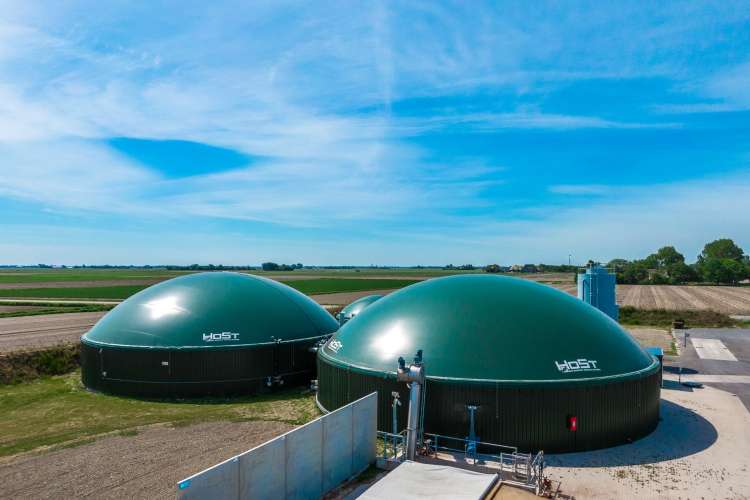Compressed biogas plan needs a reset: A silent revolution is fermenting beneath India’s soil, in sugarcane waste, paddy straw, cow dung, and urban garbage heaps. It is not just biogenic methane—it is India’s moonshot to decentralised prosperity, emissions reduction, and energy sovereignty. And yet, we have left this trillion-rupee opportunity in bureaucratic slow-mo. That ends now.
On June 1, the government nudged the procurement price for compressed biogas up from ₹1,380 to ₹1,478/mmBtu—a symbolic gesture in a sector gasping for breath. But even the best policy tweaks cannot offset the real drag: fractured partnerships, analog-era coordination, and a lack of systems thinking.
SATAT promised 5,000 CBG plants. Only 94 are running. That’s not underperformance. That’s an exponential curve waiting to break out.
READ I A consistent sin tax regime can fix health funding woes
The methane gold beneath our feet
India is biomass-rich. From Punjab’s stubble to Maharashtra’s press-mud, from cow dung in Bihar to municipal waste in Mumbai, we sit on a carbon-negative energy goldmine. Yet our inability to digitally aggregate feedstock turns abundance into volatility.
Let’s be bold: We need a real-time biomass exchange—a cross between ONDC, e-NAM, and Uber Freight—for compressed biogas developers to source quality biomass at scale, at the click of a button.
EPC 2.0: Where climate tech and AI must collide
Today’s plants yield 20% less than promise. Why? Because tenders favour legacy EPC contractors over AI-native innovators. In any other sector, this would be called value destruction. In climate tech, it’s opportunity forgone.
Let’s flip the model.
• Award contracts not on lowest cost, but highest outcome.
• Demand performance-linked guarantees.
• Use IoT, digital twins, and AI-based enzyme optimization.
This is not science fiction. It’s already live—in Brazil, Germany, and Thailand. India’s CBG must leapfrog to Version 2.0—AI + IoT + data transparency.
Compressed biogas: From byproduct to brand
Every compressed biogas plant produces fermented organic manure (FOM)—a clean, regenerative alternative to chemical fertilizers. Yet today it’s a burden, not a brand. Let’s change that.
Imagine: “Harit Amrit – Powered by India’s Green Gas Movement”, co-branded by IFFCO, KRIBHCO and delivered via agri-retail networks. It is not just waste conversion. It’s brand conversion. FOM can become a secondary revenue engine, pulling up IRRs and de-risking the primary gas play.
Time to tap carbon credits, green bonds
EBITDA today is red. But Carbon Markets are green. Every tonne of CBG can generate 2–3 Voluntary Carbon Credits (VERs) worth $20–25. With blockchain-verifiable MRV tools and partnerships with global brokers like South Pole or EKI, India’s CBG could become a carbon credit export powerhouse.
Add to that the ₹10,000 crore green bond market and blended finance pools waiting to deploy, and we can transform viability into bankability.
But first, we must de-risk:
• Guarantee offtake.
• Enforce blending mandates.
• Digitize certification.
Rewire the system: From siloes to platforms
SATAT will not scale through more LoIs or incremental price increases. It needs a full partnership architecture reboot:
- Project-Specific Consortia: Feedstock owners + EPCs + Banks + Buyers under one JDA.
Quarterly Bioenergy Roundtables: Engineers, city officials, startups—solving blockages in real-time. - AI-Enabled Command Centres: Monitoring feedstock flows, plant uptime, methane yield, and emissions—LIVE.
- Demonstration Zones: Start with Eastern UP, MP, and Maharashtra—dense agri-waste belts, CSR-ready, youth-rich.
A bio-energy authority: India’s version of SECI
Let’s create a statutory Bio-Energy Partnership Authority, backed by:
• Single-window clearances
• Time-bound VGF disbursals
• Transparent feedstock auctions
• EPC performance audits
• Fixed-tenor gas purchase guarantees
Just as SECI unlocked solar scale, this authority can do the same for compressed biogas.
Why this matters now
India’s economy is on the cusp of a clean energy revolution. But clean energy is not just solar and wind. It is local, circular, organic, and regenerative.
Compressed biogas is the only fuel that:
• Reduces methane emissions
• Empowers rural entrepreneurs
• Displaces imported LNG
• Turns waste into wealth
This is Sustainable Abundance in action. And as investors, policymakers, and sustainability stewards, we must recognise this moment for what it is: A paradigm shift in plain sight, camouflaged as a cash-burner.
We’ve seen this before—with solar, with EVs, with genomics. Now it’s compressed biogas’s turn to bend the cost curve and explode the impact curve.
Let’s move—from ambition to action. From subsidies to scale. From methane loss to value gain. Because the future of energy isn’t buried in oil fields. It’s fermenting quietly beneath our feet.

